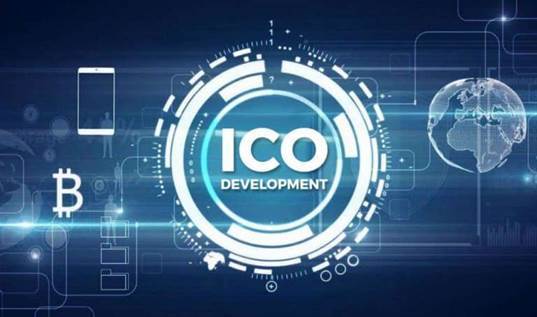Team effectiveness is enhanced by a team’s commitment to reflection and on-going evaluation. In addition to evaluating accomplishments in terms of meeting specific goals, for teams to be high-performing it is essential for them to understand their development as a team. How did you know what behaviors were acceptable or what level of performance was required? Teams usually develop norms that guide the activities of team members. Team norms set a standard for behavior, attitude, and performance that all team members are expected to follow. Norms are effective because team members want to support the team and preserve relationships in the team, and when norms are violated, there is peer pressure or sanctions to enforce compliance.
LRI provides its clients with an exclusive Client Member Area, which contains tools used by LRI consultants to strengthen teams and organizations. These tools range from PDF worksheets to video courses and supplemental training materials. During the Norming stage, the leader should continue to encourage members to share their opinions, even if they disagree. Because this stage immediately follows Storming, members may be less inclined to express their opinions if they fear more conflict. Borrill C, West MA, Shapiro D, Rees A. Team working and effectiveness in health care. Conduct a lessons learned session on how we could have matured quicker to help other teams starting out.
facilitate group effectiveness Essay
Storming involves each person getting comfortable with their role in the hierarchy and their interactions with the other team members. Everyone knows the challenges of coordinating a team – no matter how small the size or how miniscule the project, conflict will arise in some form. Generally the forming stage has the team starting on whatever larger project that they have been assigned. It’s critical to vocalize to each member their expectations and their accomplishments at every opportunity during this early stage. A good team leader will not only know each stage, but what exactly to facilitate for each stage so that they can reach the final stage quickly and with the best results. The meeting begins with introductions and a description of the team’s purpose – to increase staff participation in the hospital’s annual safety training program.
Performing is the stage of team development when team members have productive relationships and are able to communicate and coordinate effectively and efficiently. Once norms are established and the team is functioning as a unit, it enters the performing stage. By now team members work together easily on interdependent tasks and are able to communicate and coordinate effectively.
Stage 2: Storming stage
Every team has different needs when it comes to their development. Which means, you may experience these stages in sequential order, or find yourself in a loop with one or more of the stages outlined above. As you learn about their progress, you ask them questions about their processes and notice how they collaboratively provide constructive answers. Not only are you proud of the team development they’ve exemplified, but you’re also proud of their individual capacity to stay in integrity with the quality of their work. During the Ending Stage, some team members may become less focussed on the team’s tasks and their productivity may drop.
In the Performing stage of team development, members feel satisfaction in the team’s progress. They share insights into personal and group process and are aware of their own (and each other’s) strengths and weaknesses. what are the four stages of team development Members feel attached to the team as something “greater than the sum of its parts” and feel satisfaction in the team’s effectiveness. Members feel confident in their individual abilities and those of their teammates.
Collaborative On-Line Research and Learning
The goal of Bruce Tuckman’s Stages model was to help project leaders understand how their team members were building relationships together. As it turns out, people approach tasks differently depending on the quality of their relationships with their co-workers. Tuckman published his idea of how groups assemble by using his ‘Forming, Storming, Norming and Performing model’. You could say that his theory is a helpful explanation of team development, but they may differ from one individual to another. The model does explain how the team develops its maturity, through establishing working relationships. It also connotes the leadership style changing; from a directing style, to coaching, then participating and delegating before almost being detached.
- And at the same time, team members may feel a sense of deep satisfaction at the accomplishments of the team.
- You recognize this isn’t any one team member’s fault, but you want to make it right.
- The transition between these various stages requires intentional guidance and facilitation by the team leader.
- They try to conform to norms because they want to maintain their relationships in the team and they want to meet team expectations.
- Tuckman’s 4 stages of team development provide a framework to help you understand your team and more effectively reach your goals.
- In addition to observing small group behavior, Tuckman studied over 50 articles on team development and identified trends that were common in all of his research.
Rickards and Moger proposed a similar extension to the Tuckman model when a group breaks out of its norms, through a process of creative problem-solving. Take advantage of expert, personalized guidance by phone or in person. Seminars and webinars are designed to help you navigate the college admissions process, plan, and pay for your—or your child’s—college education. Creating a closing celebration https://globalcloudteam.com/ that acknowledges the contributions of individuals and the accomplishments of the team and that formally ends this particular team’s existence. To advance from this stage to the next stage, each member must relinquish the comfort zone of non-threatening topics and risk the possibility of conflict. One task we often help clients with is exploring the feasibility of developing an idea…
What is a professional development plan (PDP)? 6 steps to create one
Differences among members are appreciated and used to enhance the team’s performance. For example, the seven-member executive team at Whole Foods spends time together outside of work. According to co-CEO John Mackey, they have developed a high degree of trust that results in better communication and a willingness to work out problems and disagreements when they occur.
TCT 3Sixty: 3D printing and additive manufacturing excellence – PES Media
TCT 3Sixty: 3D printing and additive manufacturing excellence.
Posted: Tue, 16 May 2023 11:22:01 GMT [source]
Rizing’s objective is to enable every business that uses SAP solutions to achieve a truly intelligent enterprise. We help our customers with a combination of our own deep industry experience and leading SAP technologies. Ultimately, the goal is to make sure you can provide psychological safety as a baseline, evaluate team patterns of behaviour and notice when you’re in a negative cycle. This is indicated through the project stage which is either completed or very nearly there. Employees rely on each other, collaborate effectively and there’s a more lighthearted feel to the group.
Creating stages
Seek first to understand and encourage everyone on the team to take the same approach. Provide information and suggest alternative solutions to roadblocks. It’s important to demonstrate the skills you want the team to develop. Once their efforts are under way, team members need clarity about their activities and goals, as well as explicit guidance about how they will work independently and collectively.
However, when teams reach the Performing stage, they do not necessarily stay there. Teams can often cycle back through, especially if conflicts arise, sending them back to Storming. If teams want to stay in the Performing stage, they have to continuously work on building trust and improving communication. They have resolved the issues from the previous stage and are in a state of finding better ways to be a team. Often, teams will redefine their goals or team structure that were established in the Forming stage. As a result, there is increased morale on the team, and members have a more clear understanding of what they are trying to accomplish.
Signs and questions to look out for in the norming stage
The role of the leader is to ensure that these differences are dealt with in a healthy manner and do not lead to conflict. Conflicts are disagreements that lead to tension within, and between people. When two people are having disagreement their relation is intact and in conflict, the relation often turns sour and dialogue ends. Many factors in health care system can contribute to the escalation of conflict.



